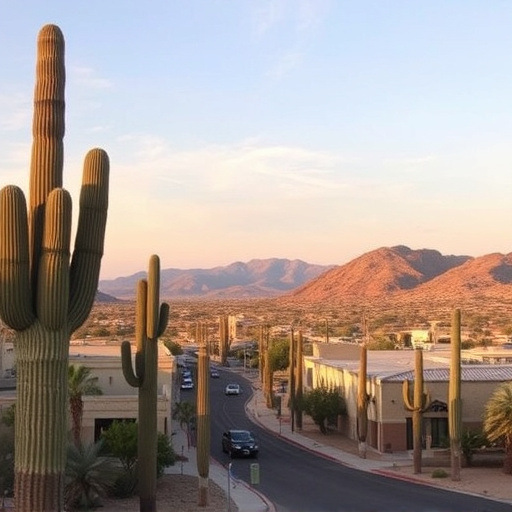The Sonora Desert in Arizona, highlighted as key Tucson travel tips, captivates nature enthusiasts with its diverse ecosystem. Home to rare species like jaguars and desert tortoises, it's preserved and explored through the Arizona-Sonora Desert Museum. This haven educates visitors about responsible tourism and conservation, offering immersive experiences with native wildlife in naturalistic habitats. Through interactive exhibits, educational programs, and sustainable practices, the museum promotes a deeper connection to nature and is a must-visit for Tucson's rich natural heritage, providing essential Tucson travel tips for families and nature lovers.
“The Arizona-Sonora Desert Museum, nestled in the heart of Tucson, is more than just a destination; it’s an experience that showcases the region’s unique desert ecosystem responsibly. This article explores how the museum balances education and entertainment while promoting responsible wildlife viewing practices. From understanding the local environment to engaging exhibits and educational programs, visitors can gain insights into the desert’s indigenous species. Additionally, we provide Tucson travel tips to ensure a meaningful visit, guiding you through the museum’s offerings and its commitment to preserving Arizona’s natural wonders.”
- Understanding Arizona's Unique Desert Ecosystem
- The Mission and Philosophy of the Museum
- Exhibits and Interactive Experiences
- Responsible Wildlife Viewing Practices
- Educational Programs and Research Opportunities
- Tucson Travel Tips for a Meaningful Visit
Understanding Arizona's Unique Desert Ecosystem

Arizona’s Sonora Desert is a unique and breathtaking landscape that sets itself apart from other destinations, making it an essential stop for anyone following Tucson travel tips. This vast desert is home to an array of native wildlife and plant species, many of which are not found anywhere else on Earth. Understanding this delicate ecosystem is crucial, as it allows visitors and locals alike to appreciate the importance of conservation efforts.
The Sonora Desert’s climate varies drastically from one region to another, ranging from semi-arid grasslands to extremely dry and hot deserts. This variability supports a diverse range of flora and fauna, including iconic creatures like the jaguar, desert tortoises, and numerous bird species. By showcasing these animals in natural habitats, the Arizona-Sonora Desert Museum offers visitors an opportunity to witness and learn about this remarkable ecosystem responsibly, contributing to both education and conservation efforts.
The Mission and Philosophy of the Museum
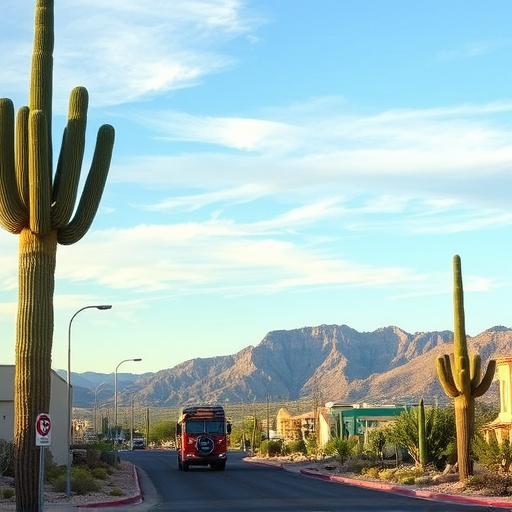
The Arizona-Sonora Desert Museum is more than just a showcase for native wildlife; it’s a sanctuary dedicated to preserving and understanding the unique ecosystem of the Sonoran Desert. Founded on the belief that education, conservation, and responsible tourism can coexist harmoniously, the museum offers visitors an immersive experience without compromising the well-being of the animals and their habitat. This commitment is reflected in its design, which blends naturally with the desert environment, allowing visitors to observe creatures like coyotes, jaguars, and diverse bird species up close while ensuring their safety and comfort.
As a leading Tucson travel tip for nature enthusiasts and families alike, the museum’s philosophy revolves around fostering a deeper connection between people and the natural world. Through interactive exhibits, guided tours, and research initiatives, it educates visitors about the delicate balance of desert life, promoting stewardship and appreciation for this fragile yet vibrant ecosystem. By embracing sustainable practices and providing responsible viewing opportunities, the Arizona-Sonora Desert Museum sets an example for how tourism can be a powerful force for conservation, making it a must-visit destination for anyone exploring Tucson’s rich natural heritage.
Exhibits and Interactive Experiences

The Arizona-Sonora Desert Museum offers a unique and immersive experience for visitors seeking to understand the delicate balance of the Sonoran Desert ecosystem. Among its many exhibits, the museum boasts a diverse collection of native wildlife, displayed in naturalistic habitats that mimic their actual environments. This responsible approach allows visitors to observe animals like jaguars, coyotes, and various bird species up close, fostering a deeper connection with the desert’s inhabitants.
Interactive experiences further enhance the visitor journey. Hands-on activities and educational programs encourage guests to engage with the desert’s challenges and wonders. From learning about water conservation to discovering the secrets of nocturnal animals, these engaging exhibits provide valuable Tucson travel tips for both locals and tourists, ensuring a memorable and informative visit.
Responsible Wildlife Viewing Practices
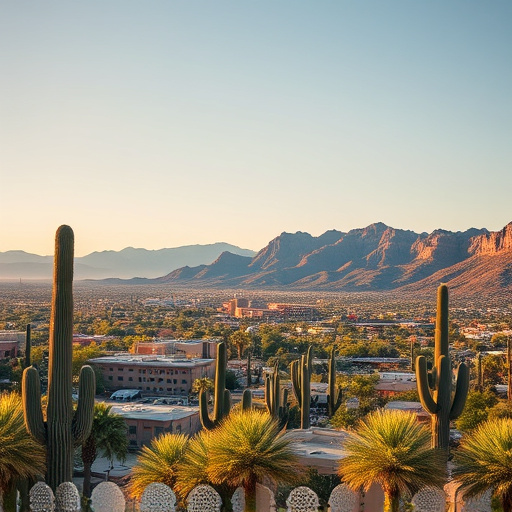
The Arizona-Sonora Desert Museum promotes responsible wildlife viewing practices, ensuring visitors can appreciate the unique desert ecosystem while minimizing their impact on native species. One key aspect is adhering to ethical guidelines when observing animals in their natural habitat, especially during Tucson travel tips like early morning or late afternoon when creatures are most active.
By adopting slow and quiet movements, maintaining a safe distance, and avoiding sudden actions, visitors can enjoy the beauty of the desert without disturbing or endangering wildlife. The museum educates guests on the importance of respecting animal spaces, especially during breeding seasons or when young offspring are present. These responsible viewing practices contribute to conservation efforts and ensure that the Arizona-Sonora Desert Museum continues to provide a positive experience for both visitors and the remarkable native wildlife it showcases.
Educational Programs and Research Opportunities
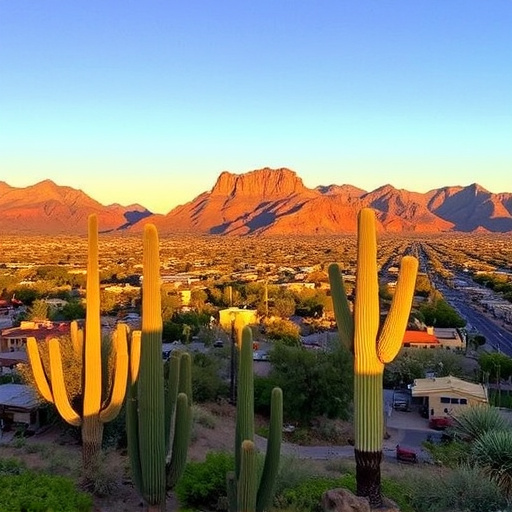
The Arizona-Sonora Desert Museum offers much more than just a glimpse into the region’s native wildlife. It provides educational programs designed to enlighten visitors about the unique ecosystem and promote responsible coexistence with desert species. These initiatives cater to various age groups, from kids’ summer camps focused on outdoor adventures and conservation, to adult workshops covering topics like desert plants and their importance in wildlife habitat.
Research is another pillar of the museum’s mission. Scientists and volunteers collaborate on studies exploring everything from the behavior of local fauna to the impact of climate change on the desert environment. These efforts contribute to Tucson travel tips for nature enthusiasts, as they help visitors understand and appreciate the delicate balance of life within the Sonora Desert.
Tucson Travel Tips for a Meaningful Visit
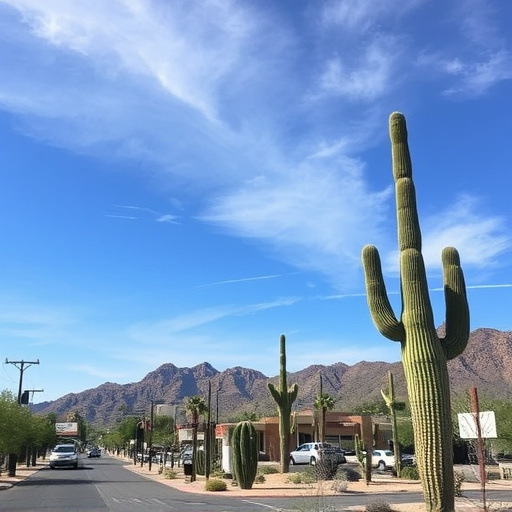
When planning your visit, Tucson travel tips include arriving early to beat the heat during the summer months. The Arizona-Sonora Desert Museum is a vibrant oasis within the vast desert landscape, so exploring its exhibits and trails in the cooler parts of the day will enhance your experience. Bring plenty of water and wear comfortable, protective footwear – these are essential Tucson travel tips for navigating the unique terrain and ensuring you stay hydrated while discovering local wildlife.
Another valuable Tucson travel tip is to allocate ample time. The museum offers a rich blend of natural history and cultural displays, showcasing the diverse ecosystems and indigenous communities that call this region home. Whether you’re interested in learning about desert plants, rattlesnakes, or ancient Puebloan culture, immersing yourself fully in the exhibits will provide a meaningful visit. Consider joining one of their guided tours for a deeper understanding of the desert’s intricacies.
The Arizona-Sonora Desert Museum stands as a beacon for responsible wildlife conservation in Tucson, offering both visitors and locals a unique opportunity to explore and understand the region’s delicate ecosystem. Through its diverse exhibits, interactive experiences, and commitment to educational programs, the museum fosters a deeper appreciation for the desert’s native inhabitants. When planning your Tucson travel tips, remember that this institution is not just a destination but a crucible for environmental stewardship, ensuring that future generations can continue to marvel at the beauty of the Sonoran Desert and its remarkable wildlife.
